Page 129 of 243

127 Refuelling
Safety FirstControls and equipment Tips and Maintenance Technical Data
T
Ti
ip
ps
s aan
nd
d MMa
ai
in
nt
te
en
na
an
nc
ce
e
R
Re
ef
fu
ue
el
ll
li
in
ng
g
F
Fi
il
ll
li
in
ng
g tth
he
e tta
an
nk
k
General notes
The filler neck is located in the rear right-side panel.
The fuel tank cap turns freely to prevent it’s opening without a key.
Open the cover, hold the cap with one hand and next introduce the
key in the lock and turn it 180° to the left. At this moment the cap
should unscrew in a counter-clockwise direction.To close, screw the cap to the right until you hear a "click". Turn the
key without releasing the cap clockwise 180°. Remove the key and
close the cover.
The tank holds about 45 liters.
F Fo
or
r tth
he
e ssa
ak
ke
e oof
f tth
he
e een
nv
vi
ir
ro
on
nm
me
en
nt
t
As soon as the automatic nozzle, correctly operated, disconnects for the
first time, the tank is full. Do not continue filling since the expansion space
would be occupied. If it heats up the fuel could overflow.
After filling the tank, screw cap and close tank flap until it engages.
The cap is tied to an anti-loss cord.
N No
ot
te
e
Any fuel spillage should be wiped off the paint finish immediately, as the
paint could otherwise be damaged, especially if it is RME (“biodiesel”) fuel.
C
Ca
au
ut
ti
io
on
n
On vehicles with a catalytic converter, never drive until the fueltank is
completely empty. The irregular fuel supply can cause misfiring. This allows
unburnt fuel into the exhaust system, which can cause overheating and
damage to the catalyst.
K
CON-009Fig. 99
Page 130 of 243

128Refuelling
P
Pe
et
tr
ro
ol
l
In the chapter “Technical Data” and on the inside of the tank flap
you will find information on the correct octane rating for your
engine.
K
General notes
•Unleaded petrol must comply with DIN EN1)228 and leaded
petrol with
DIN 51 600.
•If, in an emergency, the octane rating of the available petrol is
lower than that required by the engine, only drive with medium
engine speeds and low engine loading. H Hi
ig
gh
h een
ng
gi
in
ne
e llo
oa
ad
di
in
ng
g wwi
it
th
h
f fu
ul
ll
l tth
hr
ro
ot
tt
tl
le
e oor
r hhi
ig
gh
h rre
ev
vs
s cca
an
n cca
au
us
se
e een
ng
gi
in
ne
e dda
am
ma
ag
ge
e.
.
Fill tank with
petrol of the correct octane rating as soon as possible.
•Fuel with a higher octane rating than that required by the engine
can be used without limitation. There are, however, no advantages
regarding output and consumption.
F Fo
or
r tth
he
e ssa
ak
ke
e oof
f tth
he
e een
nv
vi
ir
ro
on
nm
me
en
nt
t
Even one tankful of leaded petrol will detract from the efficiency ofthe
catalytic converter.
N No
ot
te
e
See chapter “Filling the tank”.K
Petrol additives
The quality of the fuel has a decisive influence upon the running
behavior, performance and service life of the engine. The additives
which are mixed into the petrol are of particular significance. Itis
therefore advisable only to use good q qu
ua
al
li
it
ty
y ppe
et
tr
ro
ol
l cco
on
nt
ta
ai
in
ni
in
ng
g
a ad
dd
di
it
ti
iv
ve
es
s.
.
K
D
Di
ie
es
se
el
l
Diesel
Diesel fuel must correspond to DIN EN1)590.
C
CZ
Z2
2)
)n
no
o llo
ow
we
er
r tth
ha
an
n 449
9.
.K
RME fuel (“diester”)
According to norm DIN 51 6063).
Vehicles with diesel engines can also run on
R RM
ME
E ffu
ue
el
l (Rapeseed
Methyl Ester).
Ask your Technical Service Centre or automobile club where
biodiesel is available.
See chapter "Filling the tank".
K
1)European norm2)Cetan-Zahl (Cetane Number). Measure of diesel fuel ignitability.3)DIN preliminary Norm
Page 131 of 243

129 Refuelling
Safety FirstControls and equipment Tips and Maintenance Technical Data
Properties of RME
•RME is chemically produced from vegetable oil (predominantly
rapeseed oil) in a process whereby the oil is mixed with methanol
and converted, via a catalyst, into RME.
•RME is almost totally sulfur free. The combustion of RME thus
emits practically no sulfur dioxide (SO
2).
•Exhaust gas contains less
– carbon monoxide
– hydrocarbons
– particles (i.e. soot)
than with conventional diesel fuel.
All emission values are lower than legal requirements.
•RME fuel is biodegradable.
•Performance may be slightly lower.
•Fuel consumption may be slightly higher.
•RME can be used in temperatures down to approximately –10 °C.
•Diesel fuel must be added at ambient temperatures of less than
–10 °C to prevent deterioration to the biodiesel. The mixing ratio
of diesel to biodiesel must be approximately 50:50.
I If
f tth
he
e RRM
ME
E rra
at
ti
io
o eex
xc
ce
ee
ed
ds
s 550
0%
%,
, tto
oo
o mmu
uc
ch
h ssm
mo
ok
ke
e mma
ay
y bbe
e ffo
or
rm
me
ed
d.
.
•During the summer months, RME may be mixed with diesel at
any ratio.
K
Driving in winter
When using summer Diesel trouble may be experienced at
temperatures below
0 °C because the fuel thickens due to wax separation.
For this reason winter Diesel which is more resistant to cold is sold
during the winter in some countries, and this works correctly down
to between –15 °C and –22 °C approximately, depending on the
brand of fuel used.
The biodiesel available in countries with different climactic
conditions usually has different temperature characteristics.
Technical Service Centres or service stations in each country can
inform you of the specific characteristics of the respective diesel.
K
Filter preheating
The vehicle is fitted with a filter preheater. This will ensure that the
fuel system will remain operational down to about –25 °C,
provided that winter Diesel which is cold resistant down to –15 °C
is used.
If, at temperatures below –25 °C the fuel is waxed to such an
extent that the engine will not start it is sufficient to place the
vehicle in a warm enclosure for a while.
Fuela ad
dd
di
it
ti
iv
ve
es
s
(anti-waxing agent), petroland similar fluids must
n no
ot
t
be mixed with Diesel fuel.
K
Page 132 of 243

130Intelligent technology
I
In
nt
te
el
ll
li
ig
ge
en
nt
t tte
ec
ch
hn
no
ol
lo
og
gy
y
B
Br
ra
ak
ke
es
s
General notes
• Brake lining wear depends to a large extent on the operating
conditions and style of driving. On vehicles which are used mainly
in town traffic and stop/ start conditions or are driven hard it may
be necessary to have the thickness of the brake linings checked by
a Technical Service Centre in between the intervals given in the
Inspection and Service Schedule.
• Change down in good time when driving downhill, in order to
make use of the engine braking effect. This relieves strain on the
brake system. When the brakes are applied do not keep them on
continuously, apply and release alternately.
K
What can have a negative effect on the brakes?
W We
et
t oor
r ggr
ri
it
tt
te
ed
d rro
oa
ad
d ssu
ur
rf
fa
ac
ce
eO Ov
ve
er
rh
he
ea
at
ti
in
ng
g oof
f tth
he
e bbr
ra
ak
ke
es
s
•U
Un
nd
de
er
r cce
er
rt
ta
ai
in
n cco
on
nd
di
it
ti
io
on
ns
s ee.
.g
g.
. aaf
ft
te
er
r ddr
ri
iv
vi
in
ng
g tth
hr
ro
ou
ug
gh
h wwa
at
te
er
r,
, hhe
ea
av
vy
y rra
ai
in
n ffa
al
ll
ls
s
o or
r aaf
ft
te
er
r tth
he
e vve
eh
hi
ic
cl
le
e hha
as
s bbe
ee
en
n wwa
as
sh
he
ed
d,
, tth
he
e bbr
ra
ak
ke
es
s cco
ou
ul
ld
d sse
et
t iin
n lla
at
te
er
r tth
ha
an
n
n no
or
rm
ma
al
l ddu
ue
e tto
o dda
am
mp
p,
, oor
r iin
n wwi
in
nt
te
er
r –– ffr
ro
oz
ze
en
n,
, bbr
ra
ak
ke
e ddi
is
sc
cs
s aan
nd
d lli
in
ni
in
ng
gs
s –– tth
he
e
b br
ra
ak
ke
es
s mmu
us
st
t ffi
ir
rs
st
t bbe
e ddr
ri
ie
ed
d tth
hr
ro
ou
ug
gh
h cca
ar
re
ef
fu
ul
l bbr
ra
ak
ki
in
ng
g.
.
W
WA
AR
RN
NI
IN
NG
G
•F Fu
ul
ll
l bbr
ra
ak
ki
in
ng
g ppo
ow
we
er
r mmi
ig
gh
ht
t aal
ls
so
o sse
et
t iin
n lla
at
te
er
r tth
ha
an
n nno
or
rm
ma
al
l eev
ve
en
n wwh
he
en
n ddr
ri
iv
vi
in
ng
g
o on
n ggr
ri
it
tt
te
ed
d rro
oa
ad
ds
s iif
f yyo
ou
u hha
av
ve
e nno
ot
t bbr
ra
ak
ke
ed
d ffo
or
r sso
om
me
e tti
im
me
e –– tth
he
e lla
ay
ye
er
r oof
f ssa
al
lt
t oon
n
t th
he
e bbr
ra
ak
ke
e ddi
is
sk
ks
s aan
nd
d bbr
ra
ak
ke
e lli
in
ni
in
ng
gs
s mmu
us
st
t ffi
ir
rs
st
t bbe
e wwo
or
rn
n ddo
ow
wn
n wwh
hi
il
ls
st
t bbr
ra
ak
ki
in
ng
g.
.
W
WA
AR
RN
NI
IN
NG
G ((c
co
on
nt
ti
in
nu
ue
ed
d)
)
• • NNe
ev
ve
er
r lle
et
t tth
he
e bbr
ra
ak
ke
es
s ““r
ru
ub
b”
” bby
y ppr
re
es
ss
si
in
ng
g tth
he
e ppe
ed
da
al
l tto
oo
o lli
ig
gh
ht
tl
ly
y wwh
he
en
n yyo
ou
u ddo
o
n no
ot
t rre
ea
al
ll
ly
y nne
ee
ed
d tto
o bbr
ra
ak
ke
e.
. TTh
hi
is
s cca
au
us
se
es
s tth
he
e bbr
ra
ak
ke
es
s tto
o oov
ve
er
rh
he
ea
at
t,
, lle
ea
ad
ds
s tto
o
l lo
on
ng
ge
er
r bbr
ra
ak
ki
in
ng
g ddi
is
st
ta
an
nc
ce
es
s aan
nd
d tto
o aa hhi
ig
gh
he
er
r lle
ev
ve
el
l oof
f wwe
ea
ar
r.
.
• • BBe
ef
fo
or
re
e sst
ta
ar
rt
ti
in
ng
g oon
n aa llo
on
ng
g sst
tr
re
et
tc
ch
h oof
f rro
oa
ad
d iin
n aa vve
er
ry
y hhi
il
ll
ly
y aar
re
ea
a,
, ppl
le
ea
as
se
e rre
ed
du
uc
ce
e
y yo
ou
ur
r ssp
pe
ee
ed
d,
, cch
ha
an
ng
ge
e tto
o aa llo
ow
we
er
r gge
ea
ar
r ((m
ma
an
nu
ua
al
l gge
ea
ar
rb
bo
ox
x)
) oor
r cch
ho
oo
os
se
e aa llo
ow
we
er
r
p po
os
si
it
ti
io
on
n ((a
au
ut
to
om
ma
at
ti
ic
c gge
ea
ar
rb
bo
ox
x)
).
. IIn
n tth
hi
is
s wwa
ay
y yyo
ou
u wwi
il
ll
l uus
se
e tth
he
e bbr
ra
ak
ki
in
ng
g ppo
ow
we
er
r oof
f
t th
he
e een
ng
gi
in
ne
e aan
nd
d rre
el
li
ie
ev
ve
e ppr
re
es
ss
su
ur
re
e oon
n tth
he
e bbr
ra
ak
ke
es
s.
.
• • IIf
f aa ffr
ro
on
nt
t ssp
po
oi
il
le
er
r,
, ffu
ul
ll
l ssi
iz
ze
e wwh
he
ee
el
l ttr
ri
im
ms
s eet
tc
c.
.,
, iis
s rre
et
tr
ro
of
fi
it
tt
te
ed
d,
, iit
t iis
s nne
ec
ce
es
ss
sa
ar
ry
y tto
o
e en
ns
su
ur
re
e tth
ha
at
t tth
he
e ffl
lo
ow
w oof
f aai
ir
r tto
o tth
he
e ffr
ro
on
nt
t bbr
ra
ak
ke
es
s iis
s nno
ot
t rre
es
st
tr
ri
ic
ct
te
ed
d –– oot
th
he
er
rw
wi
is
se
e
t th
he
e bbr
ra
ak
ke
es
s cca
an
n oov
ve
er
rh
he
ea
at
t.
.
K
W WA
AR
RN
NI
IN
NG
G
Page 133 of 243

131 Intelligent technology
Safety FirstControls and equipment Tips and Maintenance Technical Data
Servobrake
A
An
nt
ti
i-
-l
lo
oc
ck
k bbr
ra
ak
ke
e ssy
ys
st
te
em
m aan
nd
d ttr
ra
ac
ct
ti
io
on
n cco
on
nt
tr
ro
ol
l
A AB
BS
S
Anti-lock brake system (ABS)
The anti-lock brake system prevents the wheels locking during
braking.
The anti-lock brake system (ABS) is an important part of the
vehicle’s active safety system.
H Ho
ow
w tth
he
e AAB
BS
S wwo
or
rk
ks
s
If one of the wheels is turning too slowly in relation to the road
speed, and is close to locking, the system will reduce the braking
pressure for this wheel. The driver is made aware of this control
process by a p pu
ul
ls
sa
at
ti
in
ng
g oof
f tth
he
e bbr
ra
ak
ke
e ppe
ed
da
al
l
and audible noise.This is a deliberate warning to the driver that one or more of the
wheels is tending to lock and the ABS control function has
intervened. In this situation it is important to keep the brake pedal
fully depressed so the ABS can regulate the brake application. Do
not pump the brake pedal.
If you brake hard on a slippery road surface, the best possible
control is retained as the wheels do not lock.
However, ABS will not necessarily guarantee shorter braking
distances in all conditions. The braking distance could even be
longer if you brake on gravel or on fresh snow covering a slippery
surface.
The traction control system (TCS)*
This system includesA AB
BS
Sand T
TC
CS
S.
The traction control system prevents the drive wheels from
spinning when the car is accelerating.
T Th
he
e sse
er
rv
vo
o iis
s oop
pe
er
ra
at
te
ed
d bby
y aa vva
ac
cu
uu
um
m wwh
hi
ic
ch
h iis
s oon
nl
ly
y gge
en
ne
er
ra
at
te
ed
d wwh
he
en
n tth
he
e
e en
ng
gi
in
ne
e iis
s rru
un
nn
ni
in
ng
g.
. FFo
or
r tth
hi
is
s rre
ea
as
so
on
n tth
he
e vve
eh
hi
ic
cl
le
e ssh
ho
ou
ul
ld
d nno
ot
t bbe
e aal
ll
lo
ow
we
ed
d tto
o rro
ol
ll
l
w wi
it
th
h tth
he
e een
ng
gi
in
ne
e ssw
wi
it
tc
ch
he
ed
d oof
ff
f.
.
W Wh
he
en
n tth
he
e bbr
ra
ak
ke
e sse
er
rv
vo
o iis
s nno
ot
t wwo
or
rk
ki
in
ng
g bbe
ec
ca
au
us
se
e,
, ffo
or
r eex
xa
am
mp
pl
le
e,
, tth
he
e vve
eh
hi
ic
cl
le
e iis
s
b be
ei
in
ng
g tto
ow
we
ed
d oor
r aa dde
ef
fe
ec
ct
t hha
as
s ooc
cc
cu
ur
rr
re
ed
d oon
n tth
he
e bbr
ra
ak
ke
e sse
er
rv
vo
o iit
ts
se
el
lf
f,
, tth
he
e bbr
ra
ak
ke
e
p pe
ed
da
al
l mmu
us
st
t bbe
e ppr
re
es
ss
se
ed
d cco
on
ns
si
id
de
er
ra
ab
bl
ly
y hha
ar
rd
de
er
r tto
o cco
om
mp
pe
en
ns
sa
at
te
e ffo
or
r tth
he
e aab
bs
se
en
nc
ce
e
o of
f sse
er
rv
vo
o aas
ss
si
is
st
ta
an
nc
ce
e.
.
K
W WA
AR
RN
NI
IN
NG
G
• • TTh
he
e aan
nt
ti
i-
-l
lo
oc
ck
k bbr
ra
ak
ke
e ssy
ys
st
te
em
m cca
an
nn
no
ot
t dde
ef
fy
y tth
he
e lla
aw
ws
s oof
f pph
hy
ys
si
ic
cs
s.
. SSl
li
ip
pp
pe
er
ry
y aan
nd
d
w we
et
t rro
oa
ad
ds
s aar
re
e dda
an
ng
ge
er
ro
ou
us
s eev
ve
en
n wwi
it
th
h AAB
BS
S!
! IIf
f yyo
ou
u nno
ot
ti
ic
ce
e tth
ha
at
t tth
he
e AAB
BS
S iis
s
w wo
or
rk
ki
in
ng
g ((t
to
o cco
ou
un
nt
te
er
ra
ac
ct
t llo
oc
ck
ke
ed
d wwh
he
ee
el
ls
s uun
nd
de
er
r bbr
ra
ak
ki
in
ng
g)
),
, yyo
ou
u ssh
ho
ou
ul
ld
d rre
ed
du
uc
ce
e
s sp
pe
ee
ed
d iim
mm
me
ed
di
ia
at
te
el
ly
y tto
o ssu
ui
it
t tth
he
e rro
oa
ad
d aan
nd
d ttr
ra
af
ff
fi
ic
c cco
on
nd
di
it
ti
io
on
ns
s.
. DDo
o nno
ot
t lle
et
t tth
he
e
e ex
xt
tr
ra
a ssa
af
fe
et
ty
y ffe
ea
at
tu
ur
re
es
s tte
em
mp
pt
t yyo
ou
u iin
nt
to
o tta
ak
ki
in
ng
g aan
ny
y rri
is
sk
ks
s wwh
he
en
n ddr
ri
iv
vi
in
ng
g.
.
• • TTh
he
e eef
ff
fe
ec
ct
ti
iv
ve
en
ne
es
ss
s oof
f AAB
BS
S iis
s aal
ls
so
o dde
et
te
er
rm
mi
in
ne
ed
d bby
y tth
he
e tty
yr
re
es
s ffi
it
tt
te
ed
d.
.
• • IIf
f tth
he
e rru
un
nn
ni
in
ng
g gge
ea
ar
r oor
r bbr
ra
ak
ke
es
s aar
re
e mmo
od
di
if
fi
ie
ed
d,
, tth
he
e eef
ff
fe
ec
ct
ti
iv
ve
en
ne
es
ss
s oof
f tth
he
e AAB
BS
S
c co
ou
ul
ld
d bbe
e sse
ev
ve
er
re
el
ly
y lli
im
mi
it
te
ed
d.
.
K
W WA
AR
RN
NI
IN
NG
G
�
Page 134 of 243

132Intelligent technology
D
De
es
sc
cr
ri
ip
pt
ti
io
on
n aan
nd
d oop
pe
er
ra
at
ti
io
on
n oof
f tth
he
e ttr
ra
ac
ct
ti
io
on
n cco
on
nt
tr
ro
ol
l ssy
ys
st
te
em
m ddu
ur
ri
in
ng
g
a ac
cc
ce
el
le
er
ra
at
ti
io
on
n ((T
TC
CS
S)
)
TCS reduces engine power to help prevent the drive wheels of front-
wheel drive vehicles losing traction during acceleration. The system
works in the entire speed range in conjunction with ABS. If a
malfunction should occur in the ABS, the TCS will also be out of
action.
TCS helps the vehicle to start moving, accelerate and climb a
gradient in slippery conditions where this may otherwise be
difficult or even impossible.
The TCS is switched on automatically when the engine is started. If
necessary, it may be turned on or off by briefly pushing the button
on the centre console.
When the TCS is off, the warning lamp is lit.
The TCS should normally be left switched on at all times. Only in
exceptional circumstances, when slipping of the wheels is
required, should it be disconnected, for example:
– With compact temporary spare wheel.
– When using the snow chains
– When driving in deep snow or on loose surfaces
– When the vehicle is bogged-down, to free it by rocking it.
The TCS should be switched on again afterwards as soon as
possible.N No
ot
te
e• In order to ensure that TCS function correctly, all four wheels must be
fitted with the same tyres. Any differences in the rolling radiusof the tyres
can cause the system to reduce engine power when this is not desired.
• Modifications to the vehicle (e.g. to the engine, the brake system, running
gear or any components affecting the wheels and tyres) could affect the
efficiency of the ABS and TCS.
K
E El
le
ec
ct
tr
ro
on
ni
ic
c sst
ta
ab
bi
il
li
is
sa
at
ti
io
on
n ppr
ro
og
gr
ra
am
mm
me
e ((E
ES
SP
P)
)*
*
General notes
The electronic stabilisation program increases the vehicle’s
stability on the road.
The electronic stabilisation program helps to reduce the danger of
skidding. It includes the A AB
BS
S
, E ED
DL
L
and T TC
CS
S
systems.
H Ho
ow
w EES
SP
P wwo
or
rk
ks
s
ESP reduces the danger of skidding by braking the wheels
individually.
The system uses the steering wheel angle and road speed to
calculate the changes of direction desired by the driver, and
• • IIt
t mmu
us
st
t bbe
e rre
em
me
em
mb
be
er
re
ed
d tth
ha
at
t TTC
CS
S cca
an
nn
no
ot
t dde
ef
fy
y tth
he
e lla
aw
ws
s oof
f pph
hy
ys
si
ic
cs
s.
. TTh
hi
is
s
s sh
ho
ou
ul
ld
d bbe
e kke
ep
pt
t iin
n mmi
in
nd
d,
, ppa
ar
rt
ti
ic
cu
ul
la
ar
rl
ly
y oon
n ssl
li
ip
pp
pe
er
ry
y aan
nd
d wwe
et
t rro
oa
ad
ds
s aan
nd
d wwh
he
en
n
t to
ow
wi
in
ng
g aa ttr
ra
ai
il
le
er
r.
.
W
WA
AR
RN
NI
IN
NG
G
• • AAl
lw
wa
ay
ys
s aad
da
ap
pt
t yyo
ou
ur
r ddr
ri
iv
vi
in
ng
g sst
ty
yl
le
e tto
o ssu
ui
it
t tth
he
e cco
on
nd
di
it
ti
io
on
n oof
f tth
he
e rro
oa
ad
ds
s aan
nd
d tth
he
e
t tr
ra
af
ff
fi
ic
c ssi
it
tu
ua
at
ti
io
on
n.
. DDo
o nno
ot
t lle
et
t tth
he
e eex
xt
tr
ra
a ssa
af
fe
et
ty
y aaf
ff
fo
or
rd
de
ed
d bby
y TTC
CS
S tte
em
mp
pt
t yyo
ou
u iin
nt
to
o
t ta
ak
ki
in
ng
g aan
ny
y rri
is
sk
ks
s wwh
he
en
n ddr
ri
iv
vi
in
ng
g,
, tth
hi
is
s cca
an
n cca
au
us
se
e aac
cc
ci
id
de
en
nt
ts
s.
.
W
WA
AR
RN
NI
IN
NG
G ((c
co
on
nt
ti
in
nu
ue
ed
d)
)
�
Page 135 of 243

133 Intelligent technology
Safety FirstControls and equipment Tips and Maintenance Technical Data
constantly compares them with the actual behaviour of the vehicle.
If the desired course is not being maintained (for instance, if the
car is starting to skid), then the ESP compensates automatically by
braking the appropriate wheel.
The forces acting on the braked wheel bring the vehicle back to a
stable condition. If the vehicle tends to oversteer, the system will
act on the front wheel on the outside of the turn.
N No
ot
te
e
•In order to ensure that ESP functions correctly, all four wheels must be
fitted with the same tyres. Any differences in the rolling radiusof the tyres
can cause the system to reduce engine power when this is not desired.
•Modifications to the vehicle (e.g. to the engine, the brake system, running
gear or any components affecting the wheels and tyres) could affectthe
efficiency of the ABS, EDL, ESP and TCS.
K
Anti-lock brake system (ABS)
The anti-lock brake system prevents the wheels locking during
braking
⇒chapter “Anti-lock brake system and traction control
ABS”.
K
Electronic differential lock (EDL)
The electronic differential lock helps prevent the loss of traction
caused if one of the driven wheels starts spinning.
EDL helps the vehicle to start moving, accelerate and climb a
gradient in slippery conditions where this may otherwise be
difficult or even impossible.
It uses the ABS sensors to monitor the speed of the driven wheels.
In case of an EDL fault the warning light for ABS lights up
⇒
chapter “Warning lamps”.
At speeds of up to approximately 80 km/h, it is able to balance out
differences in the speed of the driven wheels of approximately 100
rpm caused by a slippery road surface on one side of the vehicle. It
does this by braking the wheel which has lost traction and
distributing more driving force to the other driven wheel via the
differential.
To prevent the disc brake of the braked wheel from overheating,
the EDL cuts out automatically if subjected to excessive loads. The
vehicle will continue to function normally without EDL. For this
reason, the driver is not informed that the EDL has been switched
off.
The EDL will switch on again automatically when the brake has
cooled down.
• • IIt
t mmu
us
st
t bbe
e rre
em
me
em
mb
be
er
re
ed
d tth
ha
at
t TTC
CS
S cca
an
nn
no
ot
t dde
ef
fy
y tth
he
e lla
aw
ws
s oof
f pph
hy
ys
si
ic
cs
s.
. TTh
hi
is
s
s sh
ho
ou
ul
ld
d bbe
e kke
ep
pt
t iin
n mmi
in
nd
d,
, ppa
ar
rt
ti
ic
cu
ul
la
ar
rl
ly
y oon
n ssl
li
ip
pp
pe
er
ry
y aan
nd
d wwe
et
t rro
oa
ad
ds
s aan
nd
d wwh
he
en
n
t to
ow
wi
in
ng
g aa ttr
ra
ai
il
le
er
r.
.
• • AAl
lw
wa
ay
ys
s aad
da
ap
pt
t yyo
ou
ur
r ddr
ri
iv
vi
in
ng
g sst
ty
yl
le
e tto
o ssu
ui
it
t tth
he
e cco
on
nd
di
it
ti
io
on
n oof
f tth
he
e rro
oa
ad
ds
s aan
nd
d tth
he
e
t tr
ra
af
ff
fi
ic
c ssi
it
tu
ua
at
ti
io
on
n.
. DDo
o nno
ot
t lle
et
t tth
he
e eex
xt
tr
ra
a ssa
af
fe
et
ty
y aaf
ff
fo
or
rd
de
ed
d bby
y EES
SP
P tte
em
mp
pt
t yyo
ou
u iin
nt
to
o
t ta
ak
ki
in
ng
g aan
ny
y rri
is
sk
ks
s wwh
he
en
n ddr
ri
iv
vi
in
ng
g,
, tth
hi
is
s cca
an
n cca
au
us
se
e aac
cc
ci
id
de
en
nt
ts
s.
.
W
WA
AR
RN
NI
IN
NG
G
�
Page 136 of 243

134Intelligent technology
N
No
ot
te
e
•Modifications to the vehicle (e.g. to the engine, the brake system, running
gear or any components affecting the wheels and tyres) could affect the
efficiency of the EDL.
K
The traction control system (TCS)
The traction control system prevents the drive wheels from
spinning when the car is accelerating
⇒chapter “Anti-lock brake
system and traction control ABS”.
K
P Po
ow
we
er
r sst
te
ee
er
ri
in
ng
g*
*
Do not keep the steering wheel fully turned more than 15 seconds
when the engine is switched on, as the hydraulic oil will be heated
to a high temperature by the servo pump.
T Th
hi
is
s cco
ou
ul
ld
d dda
am
ma
ag
ge
e tth
he
e ppo
ow
we
er
r sst
te
ee
er
ri
in
ng
g ssy
ys
st
te
em
m.
.
Furthermore, each time you turn the steering wheel as far as it will
go with the engine off, you will hear a series of noises made by the
excessive effort of the servo pump. Another consequence is the
decrease of the idling speed for a short period of time.
N No
ot
te
e
Some functional aspects of the vehicle can be programmed according to
the client’s driving style. For further information, consult the Technical
Service.
K
• • WWh
he
en
n aac
cc
ce
el
le
er
ra
at
ti
in
ng
g oon
n aa ssl
li
ip
pp
pe
er
ry
y ssu
ur
rf
fa
ac
ce
e,
, ffo
or
r eex
xa
am
mp
pl
le
e oon
n iic
ce
e aan
nd
d ssn
no
ow
w,
,
p pr
re
es
ss
s tth
he
e aac
cc
ce
el
le
er
ra
at
to
or
r cca
ar
re
ef
fu
ul
ll
ly
y.
. DDe
es
sp
pi
it
te
e EED
DL
L,
, tth
he
e ddr
ri
iv
ve
en
n wwh
he
ee
el
ls
s mma
ay
y sst
ta
ar
rt
t tto
o
s sp
pi
in
n.
. TTh
hi
is
s cco
ou
ul
ld
d iim
mp
pa
ai
ir
r tth
he
e vve
eh
hi
ic
cl
le
e’
’s
s sst
ta
ab
bi
il
li
it
ty
y.
.
• • AAl
lw
wa
ay
ys
s aad
da
ap
pt
t yyo
ou
ur
r ddr
ri
iv
vi
in
ng
g sst
ty
yl
le
e tto
o ssu
ui
it
t tth
he
e cco
on
nd
di
it
ti
io
on
n oof
f tth
he
e rro
oa
ad
ds
s aan
nd
d tth
he
e
t tr
ra
af
ff
fi
ic
c ssi
it
tu
ua
at
ti
io
on
n.
. DDo
o nno
ot
t lle
et
t tth
he
e eex
xt
tr
ra
a ssa
af
fe
et
ty
y aaf
ff
fo
or
rd
de
ed
d bby
y EED
DL
L tte
em
mp
pt
t yyo
ou
u iin
nt
to
o
t ta
ak
ki
in
ng
g aan
ny
y rri
is
sk
ks
s wwh
he
en
n ddr
ri
iv
vi
in
ng
g,
, tth
hi
is
s cca
an
n cca
au
us
se
e aac
cc
ci
id
de
en
nt
ts
s.
.
W
WA
AR
RN
NI
IN
NG
G
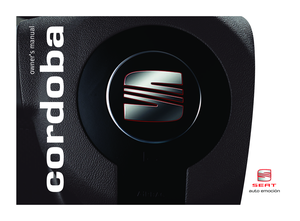 1
1 2
2 3
3 4
4 5
5 6
6 7
7 8
8 9
9 10
10 11
11 12
12 13
13 14
14 15
15 16
16 17
17 18
18 19
19 20
20 21
21 22
22 23
23 24
24 25
25 26
26 27
27 28
28 29
29 30
30 31
31 32
32 33
33 34
34 35
35 36
36 37
37 38
38 39
39 40
40 41
41 42
42 43
43 44
44 45
45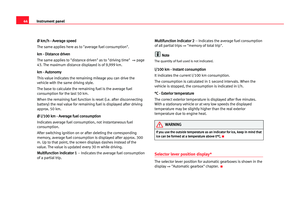 46
46 47
47 48
48 49
49 50
50 51
51 52
52 53
53 54
54 55
55 56
56 57
57 58
58 59
59 60
60 61
61 62
62 63
63 64
64 65
65 66
66 67
67 68
68 69
69 70
70 71
71 72
72 73
73 74
74 75
75 76
76 77
77 78
78 79
79 80
80 81
81 82
82 83
83 84
84 85
85 86
86 87
87 88
88 89
89 90
90 91
91 92
92 93
93 94
94 95
95 96
96 97
97 98
98 99
99 100
100 101
101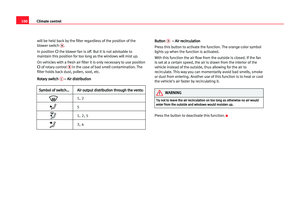 102
102 103
103 104
104 105
105 106
106 107
107 108
108 109
109 110
110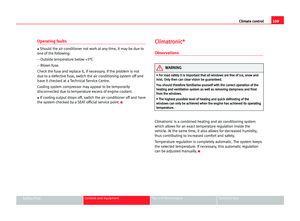 111
111 112
112 113
113 114
114 115
115 116
116 117
117 118
118 119
119 120
120 121
121 122
122 123
123 124
124 125
125 126
126 127
127 128
128 129
129 130
130 131
131 132
132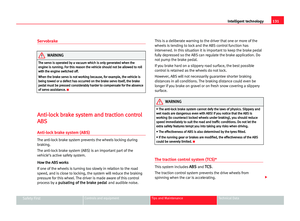 133
133 134
134 135
135 136
136 137
137 138
138 139
139 140
140 141
141 142
142 143
143 144
144 145
145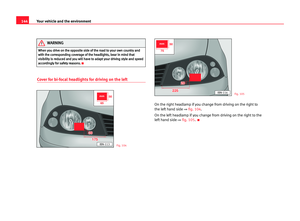 146
146 147
147 148
148 149
149 150
150 151
151 152
152 153
153 154
154 155
155 156
156 157
157 158
158 159
159 160
160 161
161 162
162 163
163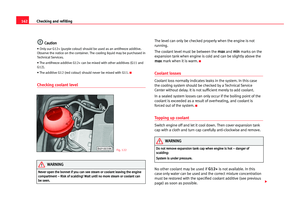 164
164 165
165 166
166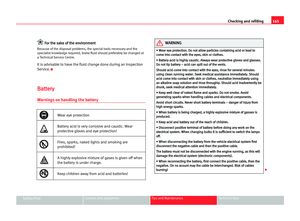 167
167 168
168 169
169 170
170 171
171 172
172 173
173 174
174 175
175 176
176 177
177 178
178 179
179 180
180 181
181 182
182 183
183 184
184 185
185 186
186 187
187 188
188 189
189 190
190 191
191 192
192 193
193 194
194 195
195 196
196 197
197 198
198 199
199 200
200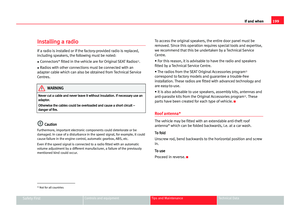 201
201 202
202 203
203 204
204 205
205 206
206 207
207 208
208 209
209 210
210 211
211 212
212 213
213 214
214 215
215 216
216 217
217 218
218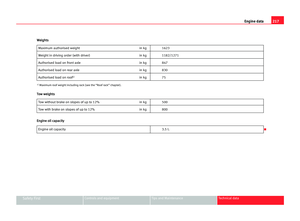 219
219 220
220 221
221 222
222 223
223 224
224 225
225 226
226 227
227 228
228 229
229 230
230 231
231 232
232 233
233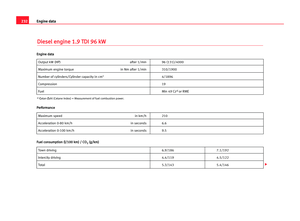 234
234 235
235 236
236 237
237 238
238 239
239 240
240 241
241 242
242






